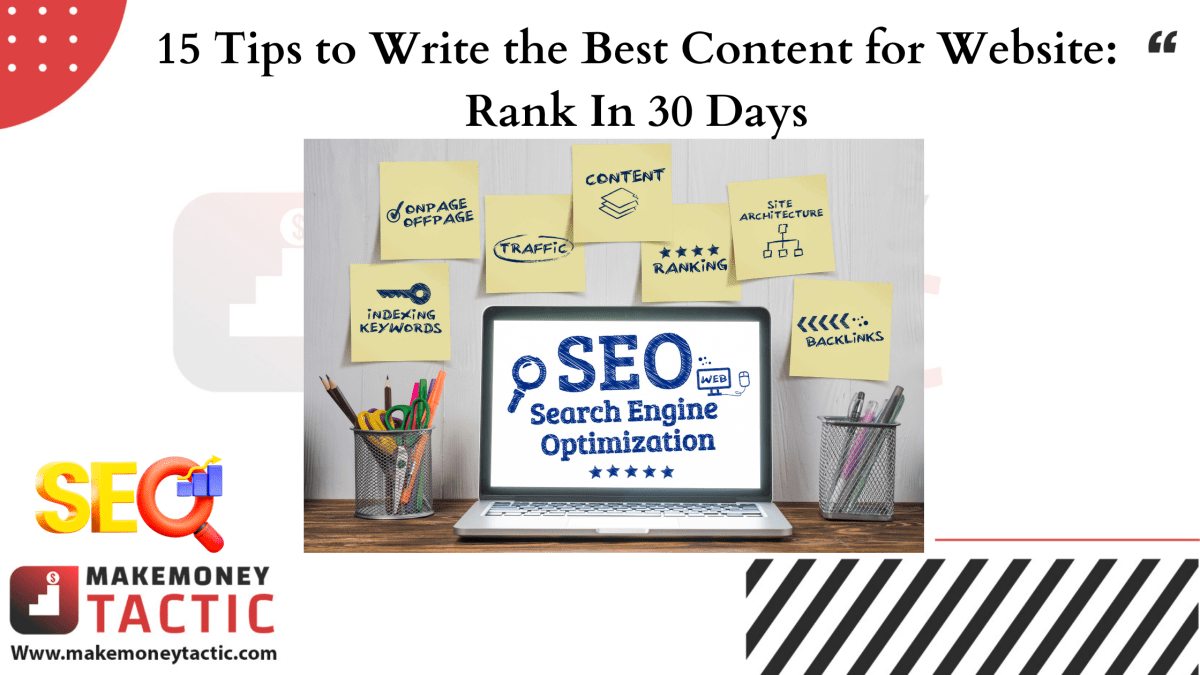Writing content is the key step for the success of any marketing strategy. Whether your business depends on social marketing, email marketing, SEO marketing, paid ads or else, you need to start by creating content. This content may be blog posts, reviews, social posts, emails, etc. In this blog post, we will talk about the best 16 tips to write the best content for website. These tips work with any type of content.
15 tips to write the best content for website
1- Start with a question.
Starting an article with a question is a great way to write engaging content.
Directly hitting the reader’s psyche by asking questions is very effective. The question will immediately interest the reader because the human ego is curious. When asking a question, the reader will subconsciously scroll down to find the answer.
2- Run header split test (Split Test)
Split Test (A/B Testing) will help compare two or more versions under the same condition. This method then evaluates and selects which version works best. So how to use split testing?
This is very simple. You just need to install the free plugin “Title Experiment Free” (for WordPress) and create as many types of titles as you want.
3- Suggestions for “next” content
One way to keep readers longer is to “bait” with “next” content. Suggesting the following content will have the opportunity to make customers accidentally see something they are interested in or simply curious about.
The longer a reader reads on your site, the higher the engagement, stay, or share rates will be.
4- Transforming long-tail keywords
Long Tail Keywords (long tail keywords – words longer than 3 words) although beneficial for organic traffic, the downside is that it is not very natural. So, when using long-tail keywords, professional content writers will create many variations of these long-tail keywords.
Transforming long-tail keywords will make the writing more natural.
After that, they will start to insert the word variations into the SEO Content paragraphs in the most natural way. Note that you should only add 1-2 words to make it sound better, and don’t distort the keyword too much because it will make Google unable to recognize it.
✅See also: Best 15 Free Keyword Research Tools for SEO: Rank on Top of Google
5- Use main and subheadings.
Using main and subheadings is great for two reasons:
- They grab the reader’s attention by acting as the focal point of the content.
- They help keep your content organized and on track.
6- Use list to write the best content for website
While lists are not always used, lists can attract readers because they are easy to follow and understand. In addition, the list is easy to skim and provides the information immediately without reading large amounts of text.
7- Use strong, precise language.
One of the best ways to engage readers is to use precise and powerful language.
This means using specific words that evoke emotions and paint a clear picture in the reader’s mind.
When writing compelling content, avoid vague terms and stick to specifics. Use active verbs whenever possible and avoid clichés.
✅See also: 9 Common Content Marketing Mistakes to Avoid
8- Use sentences in the active form.
Using sentences in the active form will be easier to understand because they are clear with few words. Using sentences in the active form is also a short, direct way.
Articles with active content will help readers stay awake and more interested in the article.
9- Use graphics
Graphics that include: images, videos, or charts and graphs are a great way to increase customer engagement and engage readers. By choosing powerful graphics, you can communicate ideas more easily than text.
10- Use serif fonts
The font is considered the body language of the content. Fonts not only reflect the tone of the content but also affect the reader’s time.
There are two popular font types, Serif and Sans Serif. Serif is a font with solid strokes at the end of each character. The characteristic small strokes of serif fonts will help make a difference, and your readers will remember your page longer.
Here are two things to keep in mind:
- Do not use multiple fonts in an article
- Do not use different fonts for each article on the same website
The Meta Description tag is the short text readers see when your site appears in search results.
Meta Description is the door that contributes to whether readers decide to click on your page to read or not. Here are 5 elements for a perfect Meta description:
- Description: Briefly describe the content of the article
- Persuasive: Show why users need to choose your article to read
- Curious: Make readers curious about the content of the article
- Match the search needs: Make the user see this article is what they are looking for
- Maximum of 160 characters: Ideally, the meta description should contain 150-160 characters. Because if this number is exceeded, the meta description will be truncated, not fully displayed, and show a “….” at the end.
✅See also: Meta Descriptions for SEO: What is a Good Meta Description?
11- Make an impression at the beginning to guarantee the best content for website
No matter how good your article content is, it can still be missed if you can’t keep them in the first 5 seconds even if they click on your article.
Start with something exciting and engaging to show the reader that there is something precious about your article.
There are many ways to make an excellent first impression, such as asking curious questions and showing something really new and valuable about your product or service.
On the other hand, you can create a contrast that can excite the reader and lead them to where you want them to read.
12- Make content easy to read.
To attract readers, your content must be easy to read. This means using short paragraphs, clear headings, and concise sentences. It’s also important to split text with images and videos.
Studies have shown that people are more likely to read and retain information when presented in a visually appealing form.
To make your content easy to read, use typography and layout tips to improve the look and feel of your articles.
✅See also: How to Structure a Blog Post in 12 Steps?
13- Provide statistics and reputable data if available
Facts and statistics can be used to engage readers by providing concrete evidence. According to research, people often believe the information that comes with numbers.
Data and statistical data make the information more prestigious and clear.
This means that when we look at the data, we will feel like we have an objective view of the subject we are reading.
Facts and statistics can help clarify a point or provide evidence for your argument.
14- End with a conclusion to ensure the best content for website
Conclusions are a great way to end your writing and leave the reader with something to think about. Conclusions can also be used to summarize the main points of your content.
According to research by The Content Marketing Institute, the conclusion is important for two reasons:
- Help readers remember what they just read
- Help provide a call to action or next steps for the reader.
15- Spell check
Whether English or Vietnamese, spelling mistakes will make readers extremely uncomfortable, and they may exit the page immediately if they feel too uncomfortable with the misspelling.
In addition, misspellings will make readers judge that you do not have enough attention and refinement for the article’s content.
Of course, everyone will make mistakes, but don’t let the misspelling happen again and again! Use Quillbot to proofread your writings.
✅See also: Quillbot Review: Citation Generator AND Co-writer
Conclusion about 15 tips to write the best content for website
Above, Makemoneytactic has accompanied you through the 15 tips to write the best content for website: 1- Start with a question. 2- Run header split test (Split Test) 3- Suggestions for “next” content 4- Transforming long-tail keywords 5- Use main and subheadings. 6- Use list 7- Use strong, precise language. 8- Use sentences in the active form. 9- Use graphics 10- Use serif fonts 11- Make an impression at the beginning. 12- Make content easy to read. 13- Provide statistics and reputable data if available 14- End with a conclusion 15- Spell check
We hope this article is valuable and informative to help you refer to and improve how to write compelling articles!






